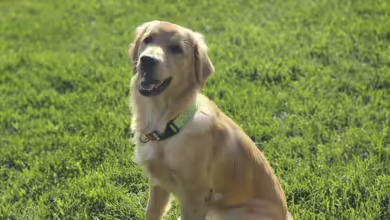Do You Have a Sir or Madam Barks-a-Lot?

Bark, bark, bark. Yap, yap, yap. It’s enough to drive you crazy!
There are many reasons dogs bark. Fear, alarm, reactivity, or boredom, it’s essential to know why your pup is going ballistic. Be observant and get to know what stimulus triggers which kind of barking response. It will be much easier to remove your fur baby from that exposure or at least make sure you know how to respond appropriately to the situation.
By the way, yelling at Fido to stop only makes it worse. Dogs will react to our energy with more barking. Manage your excitement and use a quiet but authoritative tone.
But is it right to curb the barking that comes from sheer excitement? Similar to the other types of barking, try to remove the trigger or exciting stimulus. Remove the pup herself when possible.
For example, if your four-legged friend goes bonkers when you get out the leash for a walk, do yourself a favor: Pick a time before the walk, like when he is asleep, and place the leash quietly in a spot you can retrieve it quickly and easily right before you attach it to the collar. Or find a time when he is distracted to get any walking supplies ready and near the door. This way, he won’t have time to anticipate what you’re doing.
Typically, getting your pup plenty of exercise and mental stimulation is a great way to resolve excited, attention-seeking barking. When experimenting with “cures,” as soon as your dog stops barking — even for a few seconds — feed a high-value treat and say, “Nice quiet,” to reinforce the cessation.
You can use treats as distractions, too. Take the dog outside or to another room, throw a small treat away from her, and say, “Go find it.” Do this a few times, followed by ear scratching and belly rubs. Your pup will have forgotten what she was barking at before.
Another good way to stop the noise is to redirect your dog to something else: Review an old training session you used when teaching him a new cue or trick. Teaching your dog the “walk away” cue is excellent for this. Start with something low-stimulus and use consistent reinforcement with treats. Once your pup knows the walk-away line in general, you can use it in high-excitement situations. It helps to walk away with your fur baby as you say the words and follow up with a treat. Then keep him from returning to the area of stimulation.
Granted, getting your dog to quiet down in any situation can be challenging. It will call for trial and error, patience, and consistency. But you can do it! For the sake of your nervous system and sanity, it needs to be accomplished.
Now, when it comes to the mail carrier, I can’t help you there. Some things are just the way they are.
Woof!





